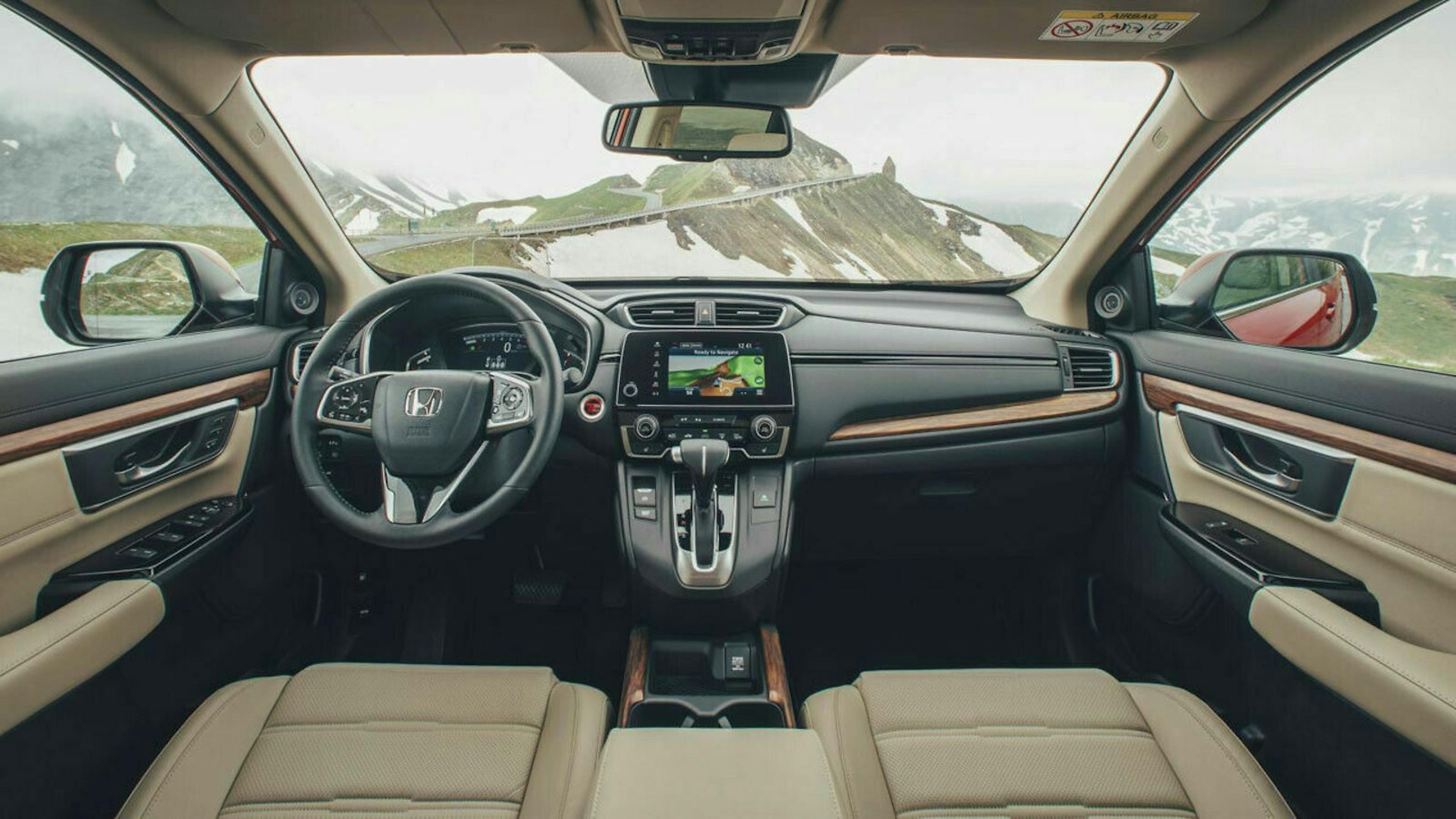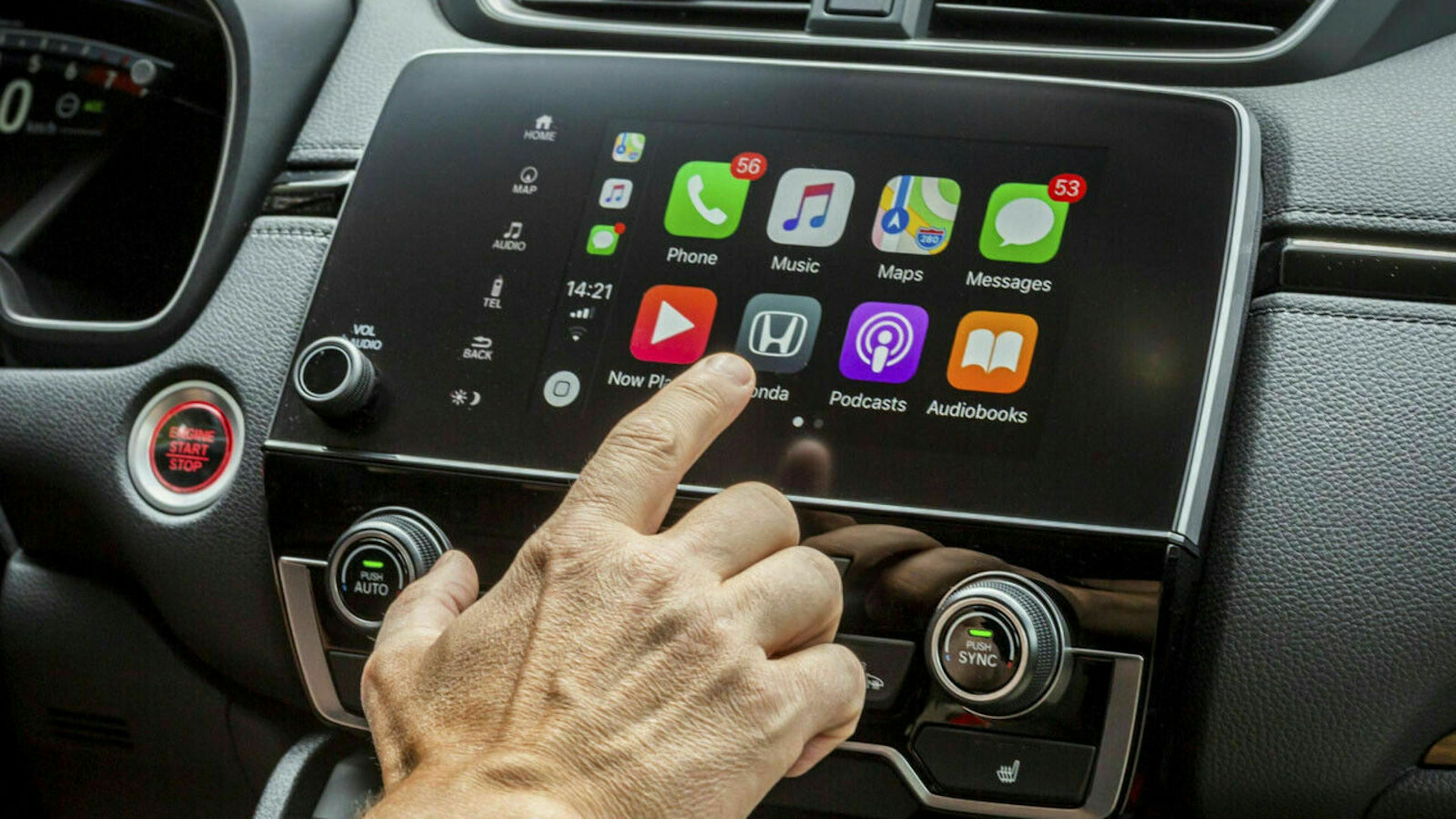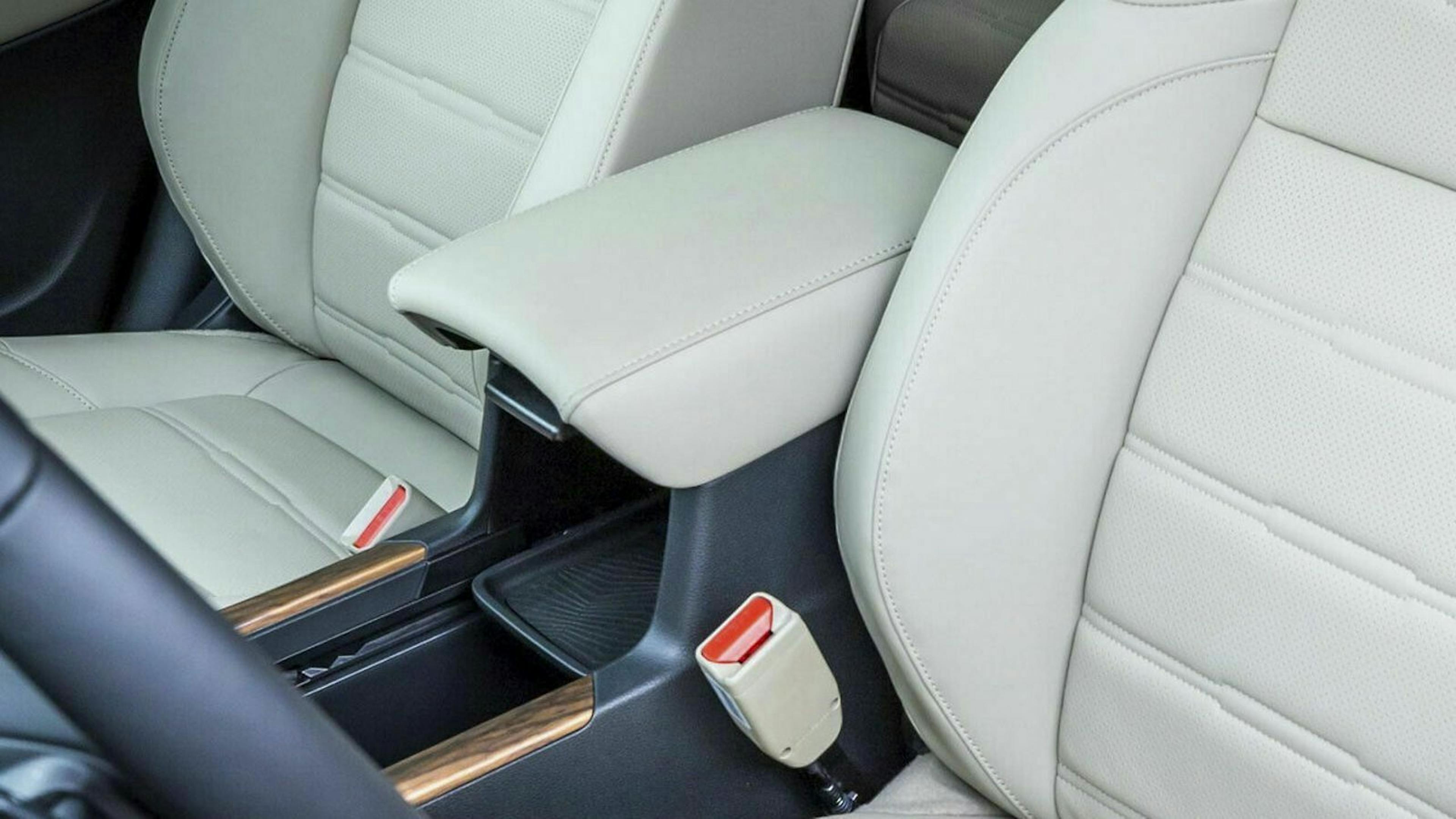The Honda CR-V in the first test
In the USA, the fifth generation of the Honda CR-V has long been on the road. The successful compact SUV only came to us in October 2018 with a delay of one and a half years. However, there is a reason for the delay: The CR-V for Europe is very different from the CR-V from the USA - although both look the same.
According to Kotaro Yamamoto, technician in Honda service, the tuning of the U.S. CR-V does not fit the European market. So it got differently tuned dampers, bigger brakes and a stiffer chassis. But something European is missing: there is no diesel drive in the CR-V.
Honda offers the CR-V with a 1.5-liter gasoline engine or hybrid drive. The gasoline engine is similar to the Honda Civic compact car. Coupled to a continuously variable CVT transmission, the engine produces 193 hp and 243 Newton meters of torque. Combined with a six-speed manual transmission, it is 173 hp and 220 Nm. For the manual transmission, there is optional all-wheel drive, the CVT transmission always comes with all-wheel drive.
The engines differ only with a higher boost pressure. The weaker CR-V offers better driving performance. As AWD, it sprints to 100 km/h in 9.8 seconds and reaches speeds of up to 208 km/h. The automatic CR-V takes 10.0 seconds and has a maximum speed of 200 km/h.
Honda CR-V with CVT: Better without full throttle
The continuously variable CVT transmission is not intended for dynamics. This is intended to make the CR-V more comfortable. To give the driver the feeling of driving with a conventional automatic, Honda simulates fixed gear ratios, i.e. different gear levels, so to speak. That's what people in Europe like better. At full throttle, however, the speed jumps to 4,000 rpm and stays there. With kick-down, there are 6,000 tours.
The SUV does not move forward particularly sportily, it seems sluggish and tough even at full throttle. If you take it a little easier, you feel more comfortable. The transmission "shifts" smoothly and reacts quite spontaneously to the accelerator pedal. The CVT is excellent for smooth gliding. And thus overall good to the CR-V. The manual transmission makes it much more agile, but it never gets really fast.

So you prefer to drive comfortably. The chassis of the CR-V rolls very smoothly and comfortably, and it cushions bumps in a relaxed manner. A little bit of it arrives in the interior, but only enough to give an idea of the road conditions.
The steering works linearly and precisely, but hardly allows any information to get to the fingers. This makes you feel a bit decoupled, but good straight-line stability and stability at high speeds are great and compensate for this.
Plenty of space in the Honda CR-V
Honda accommodates a lot of space in a manageable length in the CR-V. Compared to its predecessor, the CR-V has not been longer, but the longer wheelbase (plus three centimeters) creates more legroom on the rear seat. On the other hand, the trunk shrinks by a few liters.
Honda even optionally accommodates a third row of seats in the compact SUV. Thanks to the wide-opening doors, it can even be boarded quite well, but only children or small adults can travel comfortably in the back. To prevent it from becoming too narrow, the second row can be moved when the third is installed. The trunk volume varies with the seats. The seven-seater fits 150 litres of luggage, 561 litres with five seats, and when the rear bench is folded down, the volume grows to 1,756 litres. Then the ground becomes level as a pot.

Vorne baut Honda die Mittelkonsole aus hartem Plastik. Üblich in der Klasse. Nicht unbedingt üblich: Dort, wo das Knie des Fahrers aneckt, bringt Honda ein weiches Polster an. Die restlichen Materialien passen überwiegend ins Segment. Gepolsterte Armauflagen in den Türen schmeicheln den Ellenbogen, an vielen Stellen gibt es unterschäumten Kunststoff. Die Zierleisten in Holzoptik bestehen aus Plastik, doch alles fühlt sich solide und gut verarbeitet an.
Viel im CR-V erinnert an den Civic. Lenkrad, Infotainment, der digitale Tacho - Civic-Fahrer kennen das alles. Leider auch die unschönen Grafiken. Immerhin gibt es einen mechanischen Lautstärkeregler, der fehlt dem kompakten Honda.
Irritierendes Navigationsgerät
The navigation device in the Honda CR-V comes from Tomtom. This shows speed limits on the display, but does not coordinate them with those that the CR-V detects via camera. There are occasional discrepancies here. Neither one nor the other are really reliable, so you prefer to look for yourself. Good: The CR-V shines with LED headlights as standard. The Civic only with undignified halogen lamps.
Depending on which engine is under the hood, the
CR-V drives sometimes quietly and sometimes less quietly. Honda apparently insulates the version with all-wheel drive and CVT better than the version with manual transmission and front-wheel drive. As a result, the engine penetrates the interior with a good roar at high revs. In the AWD-CVT, on the other hand, it usually remains nice and quiet. Only under full load do all variants become present.

The gasoline engine has enough power in most situations. The curb weight of at least 1.5 tons rarely causes him problems. In addition, the engine does not consume too much. On the test drive, it was very close to the standard consumption. If you want to drive with a trailer, you can couple up to 1.5 tonnes to the version with CVT transmission, the manual gearbox pulls up to 2.0 tonnes.
Honda does not offer a diesel because of the development costs. A simple transplant from the Civic would not have worked, as the engine in the heavier CR-V would not have met the Euro 6d-Temp emission standard. The Japanese did not want to afford additional exhaust gas purification. In Thailand or India there are CR-V diesels, where the emission regulations are less strict.
The Honda CR-V as a hybrid
For Europe, the full hybrid has been available as an alternative since February 2019. However, it works differently than at Toyota, for example. Instead of supporting the gasoline engine with an electric motor, Honda is building a system in which the electric motor is supported by the gasoline engine. The hybrid system is called i-MMD and is somewhat similar to the principle with which Mitsubishi powers the Outlander PHEV.
Honda couples two electric motors with a gasoline engine that has a displacement of 2.0 liters. One of the electric motors works as a generator, the other drives the wheels and has 184 hp and 315 Newton meters of torque. It usually works alone, and is driven by a fixed reduction gear.
As a result, the CR-V basically drives like an electric car. For example, he responds just as spontaneously to the accelerator. At low load, it whirrs through the streets purely electrically. However, only about two kilometers. The lithium-ion battery only holds about one kilowatt hour of energy.
At higher loads, the operating state changes: The Honda CR-V Hybrid switches to serial hybrid operation. The combustion engine now acts as a power source. It passes on electricity directly to the drive via the generator. The battery is left out to reduce losses.
At speeds between 80 and 100 km/h, the CR-V can also be powered by the gasoline engine alone. At the same time, it charges the battery. At more than 100 km/h, the drive works again in hybrid mode. So the CR-V almost always drives partly electrically.
This is how the Honda CR-V Hybrid drives

He usually does this very quietly. Almost nothing of the drive reaches the cockpit when driving calmly. As a rule, the rolling noise is in the foreground. If power is required, however, the gasoline engine sounds unpleasant. A consequence of the combustion principle. The gasoline engine runs in the Atkinson cycle. The fact that Honda works with electronically generated counter-noise helps, but the engine remains present.
Like the conventionally burning models, the hybrid is not built for sports. The 315 Newton meters of torque are available from a standstill, there is a "Sport mode", but the CR-V has a lot of weight to carry. A lot of it is also high above the road. The suspension is rather soft to comfortable, the steering offers little feedback. After all, at the traffic lights, the CR-V drives away from many combustion engines.
The CR-V Hybrid has enough power so that you can usually roll through traffic in a relaxed manner. The front-wheel drive ended up with an average consumption of 5.6 liters per 100 kilometers on our test drive. With a standard consumption of 5.3 l. A respectable value for a high, heavy SUV. The all-wheel-drive vehicle needs about 0.3 liters more.
Conclusion Honda CR-V: A good choice without diesel
Like all hybrids, the CR-V Hybrid shows its strength, especially in the city. Here you can usually drive it with significantly less than five liters. At higher speeds, especially on the highway, it quickly becomes six liters or more. Then the combustion engine is challenged throughout. So if you drive a lot of long distances at high speeds, the CR-V is not necessarily the ideal car. A diesel still makes more sense here.
Compared to its conventionally powered brothers, however, the CR-V Hybrid is an interesting offer. On paper, it consumes about one liter less and is more lively, especially in the city. As AWD in Elegance trim, it costs 37,690 euros, while the comparable gasoline engine with all-wheel drive and CVT is on the price list at 36,590 euros. So that's an extra 1,100 euros. Actually, not much for the interesting technology.
Honda CR-V (2019): Technical Specifications
The basic model:
- Engine: 1.5-liter four-cylinder turbocharged gasoline engine
- Power: 173 hp (127 kW) at 5,600 rpm
- Torque: 220 Nm at 1,900 – 5,000 rpm
- 0 – 100 km/h: 9.3 s
- Top speed: 210 km/h
- Fuel consumption (WLTP, converted to NEDC): 6.3 l/100 km
- CO2 emissions: 143 g/km
- Length: 4,600 mm
- Height: 1,679 mm
- Width: 1,855 mm
- Wheelbase: 2,663 mm
- Curb weight: 1,501 kg
- Boot capacity: 561 – 1,756 l (5-seater) 497-1,649 l
- Price (06/2019): from 28,990 euros
The Honda CR-V with hybrid drive in the first test: Pictures


Post a Comment for "The Honda CR-V in the first test"